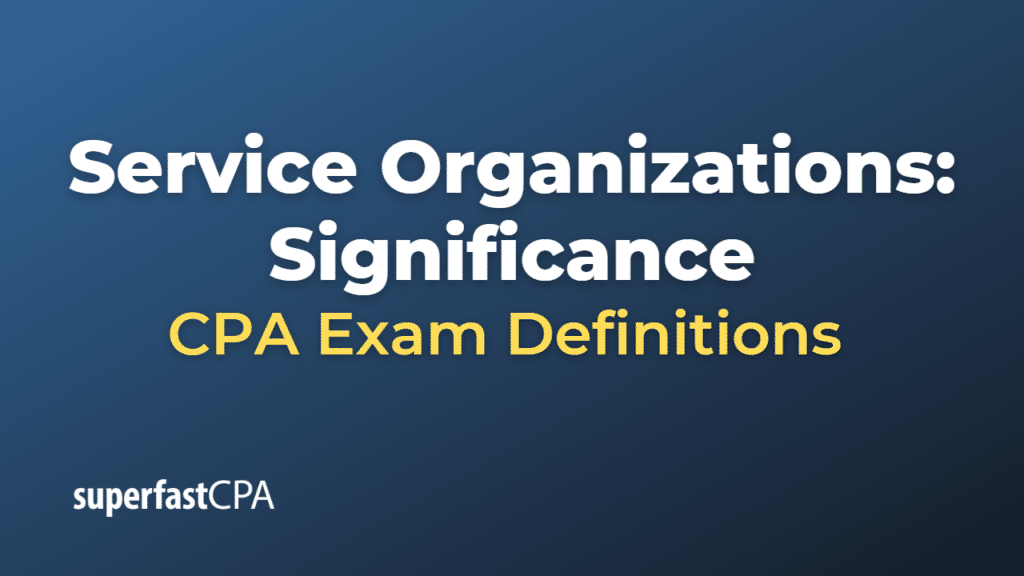Service Organizations: Significance
An auditor would identify the purpose and significance of an entity’s use of a service organization and the impact of using a SOC 1 Type 2 report in the audit of the entity’s financial statements through the following steps:
- Identify service organizations: Obtain an understanding of the entity’s use of service organizations and the nature of the services provided. This can be achieved through discussions with management, review of contracts, or examination of relevant documentation.
- Assess significance: Evaluate the significance of the services provided by the service organization to the entity’s operations and financial reporting. Consider the extent to which the service organization’s processes and controls are relevant to the entity’s internal control over financial reporting.
- Determine the purpose of using the service organization: Understand the rationale behind the entity’s decision to use the service organization. This may include cost savings, access to specialized expertise, or operational efficiencies.
- Obtain and review the SOC 1 Type 2 report: Request the service organization’s most recent SOC 1 Type 2 report, which provides an independent assessment of the design, implementation, and operating effectiveness of the service organization’s controls relevant to the user entity’s internal control over financial reporting.
- Assess the scope and coverage of the SOC 1 Type 2 report: Evaluate whether the report’s scope and coverage are sufficient to address the relevant controls and risks associated with the services provided to the entity. Ensure the report covers the appropriate period for the audit.
- Evaluate the service auditor’s qualifications and independence: Assess the qualifications, competence, and independence of the service auditor who performed the SOC 1 Type 2 engagement. This will help determine the extent to which the auditor can rely on the report’s findings.
- Review the description of the service organization’s system: Analyze the description of the service organization’s system provided in the SOC 1 Type 2 report to obtain an understanding of the service organization’s processes, risks, and control objectives.
- Review the control objectives, controls, and test results: Examine the control objectives, controls, and test results detailed in the SOC 1 Type 2 report. Evaluate whether the controls in place are relevant to the user entity’s internal control over financial reporting and whether they were operating effectively during the period covered by the report.
- Identify and assess control deficiencies: Identify any control deficiencies or deviations noted in the SOC 1 Type 2 report and assess their impact on the user entity’s financial statements and internal control over financial reporting. Determine whether additional audit procedures are necessary to obtain sufficient appropriate audit evidence.
- Plan and perform additional audit procedures: Based on the assessment of the SOC 1 Type 2 report and the impact of the service organization’s controls on the entity’s financial statements, plan and perform additional audit procedures as necessary to obtain sufficient appropriate audit evidence.
By following these steps, an auditor can identify the purpose and significance of an entity’s use of a service organization and the impact of using a SOC 1 Type 2 report in the audit of the entity’s financial statements, which will help determine the extent to which the auditor can rely on the service organization’s controls in their audit procedures.












